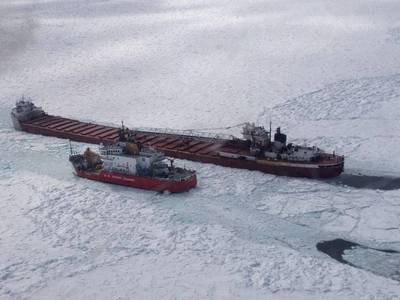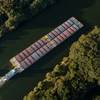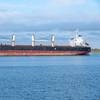The seemingly glacial ice that brought shipping on the Great Lakes to a virtual standstill last winter cost the economy more than $700 million and nearly 4,000 jobs, the Lake Carriers’ Association (LCA) reported, promting the group to to call for construction of a second heavy icebreaker to partner with the U.S. Coast Guard’s MACKINAW to keep the shipping lanes open in the harshest of conditions.
According to LCA, the winter of 2013/2014 was so brutal that U.S.-flag cargo movement between December 1, 2013 and May 30, 2014, plummeted nearly 7 million tons compared the same period in 2012/2013. At least two steelmakers had to curtail production and some powerplants were extremely low on coal. The limestone trade did not resume in earnest until well into April, and U.S.-flag lakers suffered nearly $6 million in damage trying to resupply customers. Eventually three vessels that had not been scheduled to operate last year were fit out to help overcome the shortfall in deliveries during the ice season, but the industry played catch-up the rest of the year.
“I want to stress that Lake Carriers’ Association and our members’ customers deeply appreciate the efforts of the U.S. and Canadian Coast Guards this past ice season,” said James H.I. Weakley, President of the trade association representing U.S.-flag vessel operators on the Great Lakes. “They are the only reason we were able to move nearly 10 million tons of cargo under such challenging conditions. Still, it is clear that the ice conditions that prevailed last winter call for a reassessment of both nations’ icebreaking fleets. At a minimum, Congress must authorize construction of a twin to the MACKINAW so we can have two high-powered American icebreakers on the Lakes. Another 140-foot-long icebreaking tug must be assigned to the Lakes at least until the service life extension program currently underway for the six existing 140s is completed later this decade.”
Canada has only two icebreakers assigned to the Great Lakes. “Given that there are often as many Canadian lakers in service during the ice season as there are American, Canada should reassess its icebreaking forces. We appreciate that they temporarily moved in some assets to respond to difficult conditions, but it takes time to get icebreakers from the East Coast to the Lakes, and once the Seaway closes, that option is no longer available.”
Weakley noted that Great Lakes basin industries such as steelmaking, power generation, and construction are now geared to receive cargo nearly year-round. “The Soo Locks open on March 25 and close on January 15. After the locks close, iron ore will continue to load out of Escanaba, Michigan, at least until the end of January, often into February. The cement trade on the lower Lakes often resumes about March 1 and iron ore shipments on Lake Michigan and Lake Erie start back up not long after that. Demand for U.S.-flag cargos during periods of ice cover can approach 20 million tons. That’s why the U.S. Coast Guard has nine icebreakers on the Lakes, although one is currently undergoing modernization at the Coast Guard yard in Baltimore and so will be unavailable this ice season.”
A recent study found that the cargo U.S.-flag lakers carry supports nearly 130,000 jobs in the eight Great Lakes states, but an analysis of the past winter determined nearly 4,000 jobs were lost due to the heavy ice. “Make no mistake about it, some economic activity was lost forever because of the difficulties in keeping the shipping lanes open. Steel that had been ordered was not made, which means either some products were not produced or made with foreign steel. Worst yet, some North American products were outright replaced with imports. We estimate the lost business revenue topped $700 million.”
Weakley acknowledged the winter of 2013/2014 was particularly harsh, but warned that there are very few options for customers needing cargo that is blocked by ice. “The reason so many steel mills and powerplants are located on the waterfront is so they can benefit from the efficiencies of waterborne commerce. The U.S. Army Corps of Engineers has estimated that Great Lakes shipping annually saves its customers $3.6 billion compared to the next least costly mode of transportation. But many of these mills and powerplants lack rail access. Others have limited rail access, but the railroads have little if any capacity to spare right now. The cost of new rolling stock and rail connections could only be justified by long-term contacts, not by spot market moves to fill a temporary gap in deliveries.”
“During World War II Congress authorized the first icebreaker MACKINAW for Lakes service and that vessel was in operation from 1944 until the new MACKINAW joined the fleet in 2006. While the world has changed much since 1944, the need to move cargo during periods of ice coverage is even greater now than then. We need a twin to the MACKINAW and another 140 to complete the U.S. icebreaking fleet and more Canadian assets on the Lakes.”











